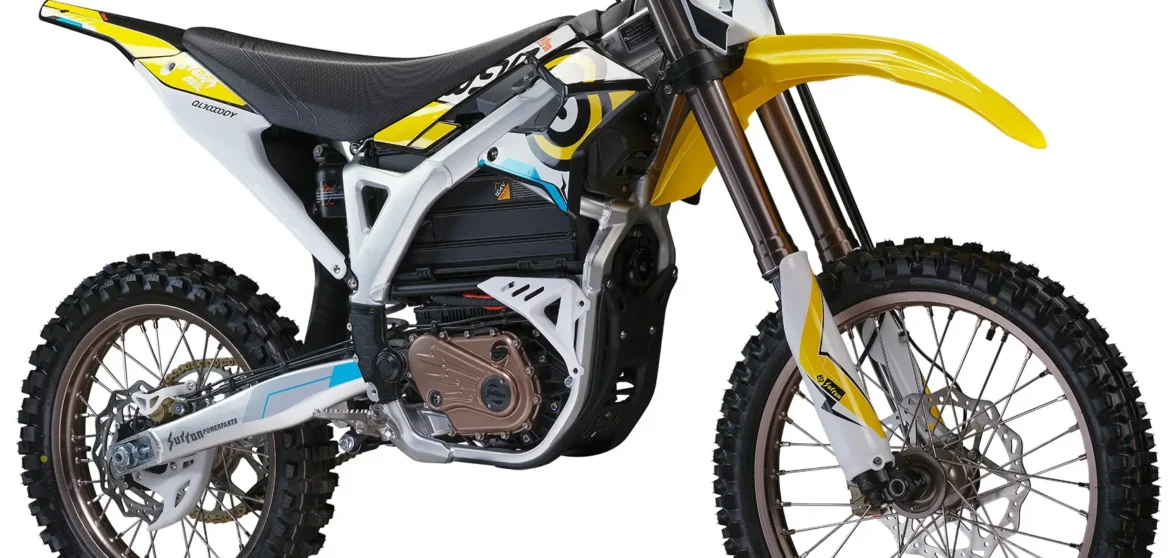
Light Bee
The Ultimate Guide to the Light Bee: Review, Price, Specs, Battery, and Upgrades
The light bee is a standout in the world of electric dirt bikes, offering a perfect mix of power, agility, and eco-conscious design. Manufactured by Sur Ron, the light bee has become a favorite for riders who crave thrilling off-road experiences without the noise and maintenance of gas-powered bikes. This comprehensive guide provides an in-depth light bee review, explores light bee specs, breaks down the light bee price, details the light bee battery, and highlights popular light bee upgrades. Whether you’re a beginner or a seasoned rider, the light bee delivers an electrifying experience for trails, urban paths, or rugged adventures.
The light bee, particularly the X model, has seen significant updates by 2025, with improvements in motor power and battery efficiency. Its lightweight frame makes it easy to handle, while its silent operation allows riders to explore without disturbing the environment. This light bee review will cover performance, user feedback, and practical tips to help you decide if this electric bike is the right choice for your adventures.
Key Features of the Light Bee
The light bee is packed with features that make it a leader in its class. Its mid-drive electric motor provides instant torque for quick acceleration, while the lightweight aluminum alloy frame ensures durability without compromising maneuverability. This combination makes the light bee ideal for navigating tight trails or performing jumps.
A notable feature is the regenerative braking system, which recharges the battery during deceleration, extending the riding range. The adjustable suspension system enhances control on varied terrains, from rocky paths to smooth dirt tracks. In any light bee review, these features are often praised for delivering a fun and reliable ride.
Design and Build Quality
The light bee’s design is both functional and sleek. It measures approximately 1870mm long, 780mm wide, and 1040mm tall, offering a compact size that’s easy to store or transport. With a seat height of 810mm, it suits riders of various sizes, and the 270mm ground clearance prevents snags on rough terrain. Weighing around 57kg, including the battery, the light bee balances stability and agility for dynamic riding.
The build quality is exceptional, with waterproof components rated IP67 for reliability in wet conditions. The forged aluminum frame resists corrosion and withstands impacts, making it a durable choice for off-road enthusiasts. Riders frequently highlight this robustness in light bee review discussions.
Performance and Handling
The light bee shines in performance, delivering a peak power of 8kW, equivalent to about 10.7 horsepower. It reaches a top speed of approximately 75 km/h (46.6 mph), suitable for recreational and semi-competitive riding. Acceleration is impressive, hitting 50 km/h in under 3 seconds, providing an exhilarating start.
Handling is enhanced by a 1260mm wheelbase and dual-sport tires that grip well on loose surfaces. The adjustable suspension, with 203mm front and 210mm rear travel, absorbs shocks effectively, reducing rider fatigue. In light bee review feedback, users often compare its handling to a high-end mountain bike but with the added thrill of electric power.
Comprehensive Light Bee Review
This light bee review reflects insights from riders and experts in 2025. The updated model boasts an 8kW motor, an improvement over earlier versions, making it more competitive. Riders love its quiet operation, low maintenance, and zero-emission design, which eliminates the need for oil changes or fuel. The range reaches up to 75km in eco mode, ideal for day-long adventures.
Some drawbacks noted in light bee review feedback include a 3-4 hour battery charge time and a top speed that’s not suited for highways. Despite these, the bike scores an average of 4.5 out of 5 for its value and fun factor. One user described it as “a game-changer for trail riding, with instant power and smooth control.”
Detailed Light Bee Specs Breakdown
The light bee specs highlight its engineering excellence. It features a 60V system with a brushless DC motor producing 196.2 ft-lb of torque at the wheel. The battery is a 40Ah lithium-ion pack using high-quality 21700 cells, removable for easy swapping. Braking is handled by hydraulic disc brakes with 203mm rotors front and rear for reliable stopping power.
Suspension offers 203mm front and 210mm rear travel, adjustable for preload and rebound. The bike rolls on 19-inch front and 17-inch rear wheels with knobby off-road tires. Additional light bee specs include LED lighting, a digital display for speed and battery status, and three ride modes—eco, sport, and turbo—for tailored performance.
Analyzing the Light Bee Price
The light bee price in 2025 typically ranges from $4,400 to $5,300, depending on the region, dealer, and included accessories. This makes it an affordable option compared to gas-powered dirt bikes, which incur ongoing fuel and maintenance costs. Entry-level models start around $4,400, while street-legal versions or those with extended warranties may approach $5,000.
The light bee price includes essentials like a charger and basic toolkit. Its strong resale value, retaining 70-80% of its cost after a year, makes it a smart investment for riders looking for long-term value.
Factors Affecting Light Bee Price
Several factors influence the light bee price. Options like upgraded batteries or custom colors can increase costs. In some regions, such as Canada, prices may reach $6,500 due to import fees. Seasonal promotions or bundle deals can lower the cost, while adding light bee upgrades like advanced controllers may raise the total. Market demand in 2025 keeps prices stable, though component shortages could cause slight variations.
Light Bee Battery: Core Power Source
The light bee battery is a 60V 40Ah lithium-ion unit, weighing about 12kg and offering up to 4kWh capacity. Built with high-quality cells, it provides a range of 50-75km, depending on terrain and ride mode. A smart Battery Management System (BMS) prevents overcharging and monitors cell health for safety.
The removable battery design allows for quick swaps, perfect for extended trips. In light bee review comments, riders praise the battery’s efficiency, noting that regenerative braking can add 10-15% to the range on descents.
Light Bee Battery Maintenance and Longevity
Proper care of the light bee battery extends its lifespan, estimated at 500-800 cycles or 3-5 years of regular use. Store the battery at 50-70% charge in cool conditions and avoid full discharges. Charging takes about 4 hours using a standard 110V outlet.
Tips from light bee review experts include periodic balancing and checking for firmware updates to optimize performance. With diligent maintenance, the battery retains 80% capacity after two years, reducing replacement costs.
Exploring Light Bee Upgrades for Customization
Light bee upgrades allow riders to tailor the bike to their needs. Popular options include aftermarket controllers that increase voltage to 72V, boosting power beyond 10kW. Battery upgrades to 50Ah or 72V packs can extend the range to 100km.
Suspension kits with improved damping enhance performance on rough trails. These light bee upgrades improve both functionality and rider experience without compromising the bike’s core reliability.
Essential Performance Light Bee Upgrades
For performance, riders often choose upgraded forks with 203mm travel or reinforced chains for high-torque scenarios. A popular light bee upgrade is a high-output controller, which can push speeds to 60mph. Upgraded tires with deeper treads improve grip, while sintered brake pads enhance stopping power.
Aesthetic and Comfort Light Bee Upgrades
Aesthetic light bee upgrades include custom decals, vibrant LED light kits, and colored frame options. For comfort, riser handlebars and gel seats reduce vibration during long rides. These modifications, often highlighted in light bee review posts, improve both style and ergonomics.
How to Install Light Bee Upgrades
Installing light bee upgrades is accessible for DIY enthusiasts with basic tools like hex keys and torque wrenches. For battery swaps, disconnect terminals carefully and secure the new unit. Suspension upgrades require aligning forks and adjusting preload settings.
For complex upgrades like controller reprogramming, consult manuals or a professional to avoid electrical issues. Always test upgrades in a safe area to confirm proper installation and compatibility.
User Testimonials in Light Bee Review
In light bee review feedback, users consistently praise its reliability. One rider shared, “After 1,000km, my light bee runs like new—perfect for tight trails.” Another appreciated its quiet operation for city rides. Common praises include its beginner-friendly modes and thrilling performance for experts, though some note the stock seat could be more comfortable, a fixable issue with upgrades.
Comparing Light Bee Specs to Competitors
When comparing light bee specs to rivals like similar electric dirt bikes, it stands out for its 57kg weight and 196 ft-lb torque. While some competitors offer slightly longer ranges, the light bee’s lower price provides better value. Its agility and build quality often give it an edge in head-to-head light bee review comparisons.
Pros and Cons from Light Bee Review
Pros: Powerful motor, lightweight design, low maintenance, eco-friendly. Cons: Limited highway speed, 3-4 hour charge time, potential cost of upgrades. The light bee’s strengths make it a top choice for off-road enthusiasts.
Frequently Asked Questions (FAQs)
What is the top speed in a light bee review?
The light bee reaches up to 75 km/h (46.6 mph), with upgrades potentially increasing this speed.
How much does the light bee price start at?
The light bee price begins around $4,400, varying by region and included features.
What are the key light bee specs?
Key light bee specs include an 8kW motor, 60V 40Ah battery, 75km range, and 57kg weight.
How long does the light bee battery last?
The light bee battery lasts 500-800 cycles, offering 50-75km per charge based on conditions.
What are popular light bee upgrades?
Popular light bee upgrades include enhanced controllers, larger batteries, and upgraded suspensions.
Is the light bee suitable for beginners according to light bee review?
Yes, light bee review feedback highlights its adjustable modes and lightweight design as beginner-friendly.
Can I make the light bee street-legal?
With light bee upgrades like lights and mirrors, it can be made street-legal in many regions.
What maintenance does the light bee battery require?
Maintain the light bee battery by storing at partial charge, avoiding deep discharges, and charging regularly.
How does the light bee compare in price to similar bikes?
The light bee price is competitive, offering strong value compared to other electric dirt bikes.
Are there any drawbacks in light bee review?
Some light bee review points mention limited range for long trips and the need for upgrades for extreme riding.
Conclusion: Why Choose the Light Bee
The light bee, with its 2025 updates, remains a top contender in electric dirt biking. This light bee review highlights its impressive specs, efficient battery, and extensive upgrade options, all at a competitive price. Whether tackling trails or cruising urban paths, the light bee offers reliability and excitement. For riders seeking an eco-friendly, versatile, and thrilling ride, the light bee is an outstanding choice.




